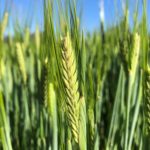OPTIMISING IRRIGATED GRAINS
Durum Wheat
The GRDC Project “Development and validation of soil amelioration and agronomic practices to realise the genetic potential of grain crops grown under a high yield potential, irrigated environment in the northern and southern regions” includes 66 replicated field trials per year for 3 years. The trials cover the major irrigation types distributed across the Murrumbidgee and Murray Valleys of southern NSW, the Murray Valley of northern Victoria, south-east SA, SA/Vic Mallee and Tasmania.
Project Aim
The project aim is to evaluate crop response to agronomic practice across a range of irrigated systems and quantify yield potential in different environments (targeting >4 t/ha canola, >6 t/ha in faba bean, >10 t/ha in durum and >19 t/ha in maize).
The Durum Wheat trials include:
- Optimum plant populations and crop structure of durum wheat grown under overhead and flood irrigation
- Nitrogen Use Efficiency Trial – N rates
- Nitrogen Use Efficiency Trial – N Timing trial
- Germplasm disease management interaction
- Disease management for irrigated crops – products, rates and timings
- Plant growth regulation for lodging control in irrigated Durum
2020 results
Research Results
View the research results from 2020
2020-2021
Key Learnings
View the research results from the first 2 years of the research



